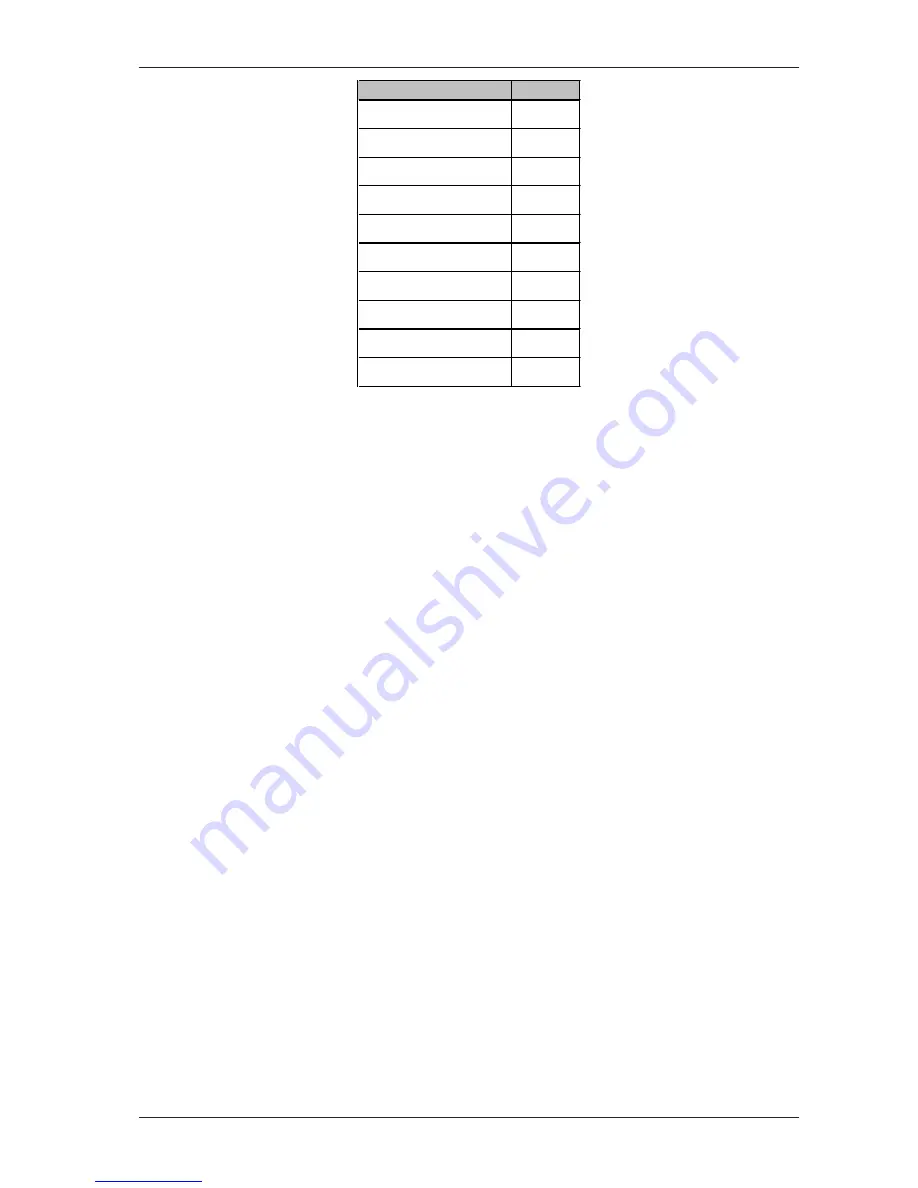
21
AUTOCOM PRO MDX1400
Control
Setting
SC EXT switch
IN
SC MON switch
OUT
INTERACTIVE switch
OFF
SC FILTER switch
OUT
THRESHOLD control
+20 dB
RATIO control
1:4
AUTO switch
OUT
ATTACK control
0,5 ms
RELEASE control
200 ms
OUTPUT control
0 dB
Tab. 5.1: Initial settings for the De-Esser functions
5.2.2 Frequency Selective Filtering Of Unwanted Signals
Based on the set-up described in the de-esser section, the unit may also be used to eliminate rumble, hum
and equipment noise (air-conditioning systems, camera noise etc.). Using the SC MON switch, adjust the
frequencies of the equalizer to match the unwanted frequencies and use a peak filter with a high slope. Take
care to decrease the amplitudes of the unrequired frequencies. Proceed now as described in the
previous chapter 5.2.1. This will result in compression of the selected frequencies and thus a decrease in the
gain of the program material.
5.2.3 Suppressing Instruments During Recording
Another function of the BEHRINGER AUTOCOM PRO allows helpful correction of previously recorded material.
If, for example, an excessively loud bass drum needs to be suppressed, reduce all the equalizers frequency
bands above 150 Hz. This setting causes frequency specific compression, which reacts as soon as increased
energy is detected in this band. By increasing the threshold level, the compression can be made to react only
to loud pedal or stick actions. Generally, it can be said that relatively high threshold settings prevent the overall
sound from being impaired and lead to the compression of solo instruments or very loud sounds.
5.2.4 Emphasizing Musical Instruments During Recording
On the other hand, you can use the BEHRINGER AUTOCOM PRO to bring out an instrument solo or a lead
vocal in a cluttered mix. Using the SC MON switch, match the frequencies of the equalizer to the frequencies
of the instruments to be emphasized and for this it is best to use a notch filter with a high slope.
Please make sure that in this application, you only reduce the amplitude of the selected frequencies. The
compression results in a subjective decrease in the volume of the overall program material. Only the selected
frequencies coming from the equalizer remain uncompressed and are therefore perceived as being louder. This
inverse type of compression also helps to emphasize instruments during low level passages, so that they
become more pronounced.
5.3 Anticipated Compression
If you feed the audio signal directly into the SC RETURN input and send the audio signal through a delay
before the audio input, the BEHRINGER AUTOCOM PRO can anticipate the need for gain change. With
experimentation, the effect can create a zero attack time at a given frequency. Additional delay beyond this
zero attack time will produce a special sound effect, similar to the dynamic envelope inversion you may
already be familiar with from reverse tape playback.
5. EXTERNAL SIDECHAIN APPLICATIONS
Downloaded from
www.Manualslib.com
manuals search engine






















